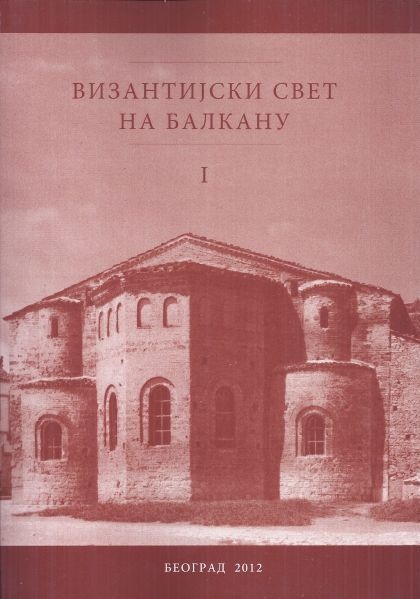Представе светог Климента Охридског у зидном сликарству средњовековне Србије
Presentation of St. Kliment of Ohrid in the Wall-Painting of Medieval Serbia
Author(s): Dragan Vojvodić
Subject(s): Cultural history, Visual Arts, 6th to 12th Centuries, 13th to 14th Centuries
Published by: Vizantološki institut SANU
Summary/Abstract: Images of St. Kliment of Ohrid seem to have already appeared in the monumental art of medieval Serbia from the first decade of the 14th century. There are more of them than it was thought earlier and they were represented in the churches of the old lands of Rascia as well as in Macedonia. Probably the earliest presentation of St. Kliment of Ohrid in Serbian wall-painting is preserved in the altar of the Church of the Ascension in Žiča. The wall-painting in that part of the church in Žiča, which is marked by certain archaic features of style, should be dated to the time of the Archbishop Jevstatije II, or more precisely, a little before 1309. St. Kliment of Ohrid was also depicted in some of King Milutin's endowments, which were decorated with frescoes by the zographs from his “royal workshop”. It is highly probable that the portrait of the said saint was represented in the programs of our Lady of Ljeviša in Prizren (1309–1313), the King's Church in Studenica, in Gračanica (around 1320) and in Hilandar (1320–1321). In all those churches, presentations were painted of the saintly bishop bearing the name Kliment, with the facial features of the patron of Ohrid. The presentation of St. Kliment in Staro Nagoričane (1316) was painted next to the presentations of St. Constantine Kabasilas and the Serbian archbishop Sava, within the framework of the composition with Officiating bishops. This presentation of Kliment, like those in Žiča, is inscribed with the definition “of Ohrid”. It is much less certain that the holy patron of Ohrid was represented in St. Nicholas ton Orphanon in Thessaloniki. The topographical definition “of Ohrid” also accompanies the images of St. Kliment in some churches of the Serbian donors from the period of the king and emperor Dušan, such as the Bela Crkva (White Church) of Karan (1332–1337), the Virgin Hodegitria in Pe} (until 1337), and Mateič (around 1350). A little later in Psača, the Markov Manastir near Skoplje and Andreaš (St. Andrew's church) on the River Treska, St. Kliment was painted without a topographical definition in the inscription but with all the essential physiognomical features of the patron of Ohrid. It is likely that St. Kliment of Ohrid was also depicted in the Church of St. George in Rečane near Prizren (around 1370), as well as in some other Serbian churches dating from the 14th century. Where 15th century Serbian painting is concerned, it was possible to reliably identify his portrait only in the recently destroyed church of the Presentation of the Blessed Virgin in Dolac near Klina (Metohija), dated to around 1450, and in Poganovo (1499).
Book: Византијски свет на Балкану I-II
- Page Range: 145-176
- Page Count: 23
- Publication Year: 2012
- Language: Serbian
- Content File-PDF

